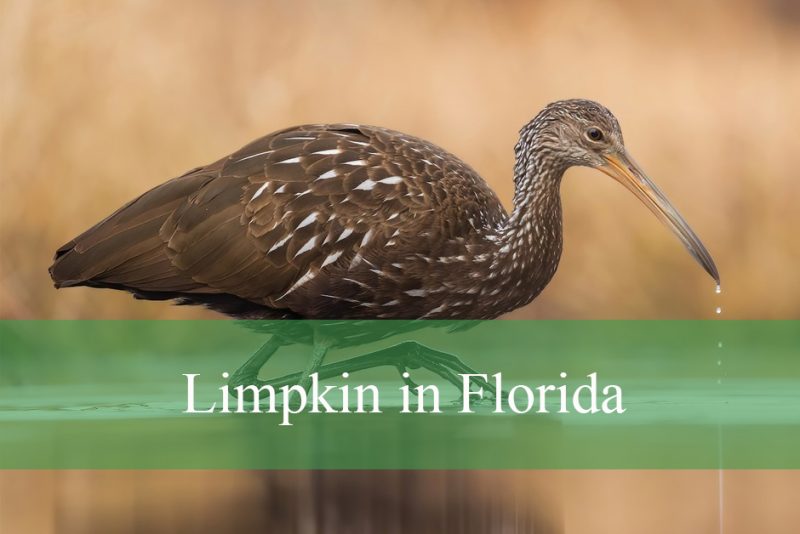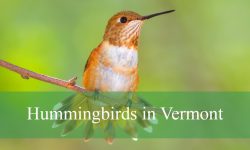The Limpkin (Aramus guarauna) is one of Florida’s most fascinating and unique birds, attracting the attention of birdwatchers, nature enthusiasts, and photographers alike. Although it may not be as widely known as some of Florida’s more famous birds, the Limpkin offers a rare and captivating experience for those willing to explore the state’s extensive wetland ecosystems.
In this article, we will explore the many reasons why the Limpkin in Florida is a must-see for birdwatchers, covering its biology, behavior, habitat preferences, ecological importance, and how to best observe this elusive bird in the wild.
Introduction to the Limpkin: An Uncommon Wading Bird

The Limpkin is a medium-sized wading bird, closely related to cranes and rails, but it belongs to its own unique family, Aramidae. It is sometimes nicknamed the “crying bird” because of its loud, wailing calls that echo through Florida’s wetlands at dawn and dusk. The bird’s appearance is unmistakable, with its long legs and neck, brown feathers streaked with white, and a slightly curved bill specially adapted for its favorite prey—apple snails.
Unlike more flashy or colorful birds, the Limpkin’s plumage helps it blend into the marshy vegetation and murky waters it calls home. This cryptic coloring and shy nature often make the Limpkin a challenge to spot, but its distinctive voice often gives away its presence long before it’s seen.
The species is found throughout the Caribbean, Central and South America, but Florida represents the northernmost range for the Limpkin in the United States. This makes Florida an important location for birdwatchers hoping to see this bird without traveling to more tropical regions.
The Unique Appearance and Behavior of Florida’s Limpkin
One of the most striking features of the Limpkin is its bill. The bird’s long, slender, slightly down-curved bill is perfectly shaped to pry apple snails from their shells, which make up the vast majority of its diet. This specialization makes the Limpkin a unique example of evolutionary adaptation, showcasing a close relationship between predator and prey.
In addition to its distinctive bill, the Limpkin’s behavior is also of great interest. Unlike many wading birds that hunt by quickly stalking prey or probing in mud, the Limpkin moves slowly and deliberately through shallow waters and dense reeds. It uses a combination of sight and touch to locate snails and often taps the shells to find them. Once an apple snail is found, the Limpkin deftly uses its bill to extract the snail from its shell, a feeding technique that fascinates both scientists and birdwatchers.
The Limpkin’s vocalizations add to its mystique. Its calls are a loud, eerie, and haunting series of wails and screams that can carry for long distances. These calls are most often heard during the breeding season but can be heard year-round in some areas. This unique soundscape contributes significantly to the ambiance of Florida’s wetlands and makes finding a Limpkin a sensory experience as much as a visual one.
Why Florida Is the Ultimate Destination to See Limpkins
Florida’s diverse and extensive wetland habitats make it the best place in the United States to observe Limpkins. The bird thrives in freshwater marshes, swamps, lakeshores, and slow-moving rivers—all of which are abundant throughout the state. Among these habitats, the Everglades stands out as a prime location.
The Everglades National Park, often called the “River of Grass,” offers an unparalleled opportunity to see Limpkins in their natural environment. The vast subtropical wetlands provide the perfect mix of water, vegetation, and abundant apple snail populations. Birdwatchers visiting the Everglades can witness Limpkins feeding, calling, and nesting in the same habitat that supports countless other iconic Florida species.
Other notable spots include the Kissimmee Chain of Lakes and the freshwater wetlands of central and southern Florida. These areas support healthy populations of apple snails, which attract Limpkins and support their year-round presence.
The availability of suitable habitat combined with Florida’s generally mild climate means Limpkins can be observed throughout the year, making the state a convenient destination for birdwatchers.
The Ecological Importance of Limpkins in Florida’s Wetlands
The Limpkin plays an essential role in the ecology of Florida’s wetlands. Its diet consists almost exclusively of apple snails, which are large freshwater snails that have become widespread in the region. These snails can reproduce rapidly and, if left unchecked, may disrupt native aquatic vegetation and ecosystem balance.
By preying on apple snails, Limpkins help regulate snail populations, thereby contributing to the health of wetland ecosystems. This biological control helps maintain the delicate balance between various aquatic species and prevents overpopulation of snails that could damage native plants and aquatic habitats.
Furthermore, because Limpkins are sensitive to changes in wetland quality, their presence serves as a bioindicator of ecosystem health. Declines in Limpkin populations can signal environmental problems such as water pollution, habitat loss, or invasive species disruptions. For this reason, conservationists and ecologists pay close attention to Limpkin populations as a measure of wetland conservation success.
When and Where to Watch Limpkins in Florida
Birdwatchers seeking Limpkins in Florida should plan their visits carefully to maximize the chances of sightings. The best time to observe Limpkins is during the breeding season, which generally occurs from late spring through early summer. During this period, Limpkins are highly vocal and active, making them easier to detect.
Early mornings and late afternoons are prime times to spot Limpkins feeding and calling. During the heat of the day, these birds often retreat into thicker vegetation to rest, making sightings less frequent.
The Everglades National Park is the most famous and accessible location for Limpkin watching. Visitors can explore trails, boardwalks, and boat tours that offer views of the bird’s preferred habitats. Other locations like the Kissimmee Chain of Lakes, Corkscrew Swamp Sanctuary, and Loxahatchee National Wildlife Refuge also provide excellent opportunities.
When visiting these sites, birdwatchers should move quietly and maintain a respectful distance to avoid disturbing the birds. Limpkins are generally shy and wary, so patience and stealth increase the chances of rewarding observations.
How to Identify a Limpkin: Key Field Marks and Behavior
Correctly identifying a Limpkin is vital for both novice and experienced birdwatchers. The bird’s medium-large size, long legs, and neck make it stand out among Florida’s wetland birds. Its brown plumage with bold white streaks and spots gives it a mottled appearance that blends with marsh vegetation.
The slightly curved bill is a distinctive field mark. Unlike the straight bills of many herons and egrets, the Limpkin’s bill curves downwards at the tip, adapted to pry open snail shells. Watching the bird’s feeding technique—deliberate, slow, and focused on snail extraction—is often the best way to confirm its identity.
Listening for the Limpkin’s call is another reliable method. Its loud, high-pitched, and wavering scream can be heard echoing through wetlands, often at dawn or dusk. Recognizing this call helps locate the bird even when it is concealed by dense reeds or foliage.
Conservation Status and Challenges Facing the Limpkin in Florida
Currently, the Limpkin is classified as a species of “Least Concern” by conservation organizations, reflecting a stable population across its range. However, Florida’s Limpkin populations face ongoing challenges from habitat loss and environmental degradation.
Wetlands in Florida have historically been drained or altered for agriculture, urban development, and infrastructure projects. Although many conservation efforts are underway to protect and restore these ecosystems, continued pressure threatens the availability of suitable Limpkin habitat.
Pollution, invasive plant species, and climate change also pose risks. Rising sea levels and increased storm activity could alter freshwater wetlands, impacting both Limpkins and their snail prey.
Conservation programs emphasize the importance of preserving natural wetlands, monitoring Limpkin populations, and educating the public about the value of these birds and their habitats. Birdwatchers contribute to conservation by reporting sightings and practicing responsible wildlife observation.
The Cultural Significance of Limpkins in Florida
The Limpkin holds a special place in Florida’s natural and cultural landscape. Its haunting calls have inspired folklore and are often regarded as one of the mysterious sounds of the Everglades. The bird’s unique feeding behavior and adaptation to Florida’s wetlands make it a symbol of the state’s ecological diversity.
For birdwatchers, spotting a Limpkin is often a memorable and rewarding experience, adding depth to their appreciation of Florida’s wildlife. The bird’s elusive nature and distinctive voice contribute to the sense of discovery that draws people to Florida’s wild places.
The Limpkin also serves as a flagship species for wetland conservation, helping to raise awareness about the importance of protecting these fragile ecosystems.
Tips for Birdwatchers to Enhance Limpkin Viewing Experiences
To fully enjoy and succeed in Limpkin watching, birdwatchers should prepare carefully. Using binoculars or a spotting scope is highly recommended to observe the bird’s subtle details without disturbing it.
Learning to recognize the Limpkin’s vocalizations is invaluable. Because these birds often remain hidden, following their calls is often the best way to locate them.
Choosing the right time of day, especially early morning and late afternoon, increases chances of sightings. Dressing in muted colors and moving quietly will prevent scaring the bird away.
Joining guided birdwatching tours or visiting wildlife refuges with knowledgeable staff can enhance the experience by providing local expertise on where to find Limpkins and how to interpret their behavior.
Conclusion: An Unforgettable Birdwatching Encounter
The Limpkin in Florida is truly a must-see for birdwatchers due to its unique characteristics, fascinating behavior, and the exceptional habitat it calls home. Observing this bird offers insight into Florida’s rich wetland ecosystems and the complex relationships between species and their environment.
Whether you are a seasoned birder or a casual nature lover, seeking out the Limpkin provides a rewarding adventure that connects you with the wild heart of Florida. From its haunting calls echoing over marshes to the delicate skill with which it extracts snails from shells, the Limpkin’s story is one of adaptation, survival, and the enduring beauty of nature.
Florida’s wetlands remain one of the best places to experience this remarkable bird, and every sighting helps deepen our appreciation for the natural world and the importance of conserving it for future generations.






